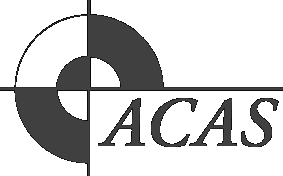
Some tips
Rev. Nov. 2019
Purpose
The main (and obvious) purpose of these audits is to evaluate whether the program complies with the standards. Other purposes include:
- Educate ACAS people on the standards and how to apply them and
- Encourage improvement.
Responding
- People are nervous during an audit and get defensive if something is found to be non-compliant. Don’t get into an argument with the auditee. If the atmosphere is tense, move on and come back to the topic later.
- Keep a diary of inaccurate and accurate interpretations of standards, standards that are unclear, what you learned about auditing, innovative programs, innovative ways of meeting compliance requirements, and other kinds of leading questions. You’ll probably learn a lot.
- Ask for help if you get stuck, especially if you’re a newbie at this.
- In your comments, don’t say only "compliant" or "non-compliant." Use the remarks column to describe what they do and the reasons for your answer.
- If something does not comply with the standard, describe it and state the exact nature of the deficiency. Record a conclusion of non-compliant. Like assessments, your records should be detailed enough to withstand an appeal.
- If you are not sure whether something complies with the standard, record a conclusion of non-compliant, describe it and state the exact nature of the deficiency or vaguary. The auditee is responsible to show clearly that they have complied.
- If something complies with the standard but is weak, record a conclusion of compliant but note the opportunity for improvement in the audit record.
- Record notable risks in the audit record. (However, a risk is not necessarily a non-compliance.)
- If something complies and is unusually good, give credit where credit is due.
ACAS systems
The ACAS website addresses many compliance requirements. However, member colleges might create non-compliances:
- They might ask for fees over the limit for pre-paid fees.
- They might create incorrect advertising, e.g. incorrect qualification codes and titles, failing to mention that it is an ACAS program.
- They might not point to the ACAS website materials.
- They might use the logo incorrectly.
Other documents
- As you go, keep copies of all documents used as evidence (or as many as is practical). This is so even if all auditees have already provided ACAS with copies. They will probably be necessary for demonstrating compliance. They can be hard or soft copies.
- Include a list of contents or a folder structure so that everything is clearly labelled and easy for someone to find even if they are unfamiliar with the auditee organization.
Other tips
Home
- One auditor required that all activities that are subject to SRTO compliance must be recorded in writing, even if they are of no benefit to the RTO. In assessment tools, this means a separate response to each requirement (e.g. each performance criteria), even if it is only a tick-box. Although it is probably good practice, the SRTO does not actually require this much compliance documentation.
- Websites are difficult when relevant information is scattered throughout and mixed with other information. If a website contains material that is unrelated to RTO business, auditees should put all RTO-related material together in one part of the website.
- If the member college has a relationship with another RTO, it must be very clear which qualifications are issued by each RTO, because students must be clearly informed which RTO they are under for their qualification.
- An approved ACAS training and assessment strategy is evidence of compliance for some standards. For other aspects, it is only a promise to comply, and you need to check that the auspicee has delivered on its promise.
- The SRTO does not define assessment tools, although they are normally:
- Instructions to the students on what they must do (tasks, conditions, etc.)
- A way of recording assessments
- Instructions to the assessor if not explained in the instructions to the students.
- A means of ensuring reliability. This may be in one of the above documents as re-written performance criteria, or in a separate document such as a marking guide.